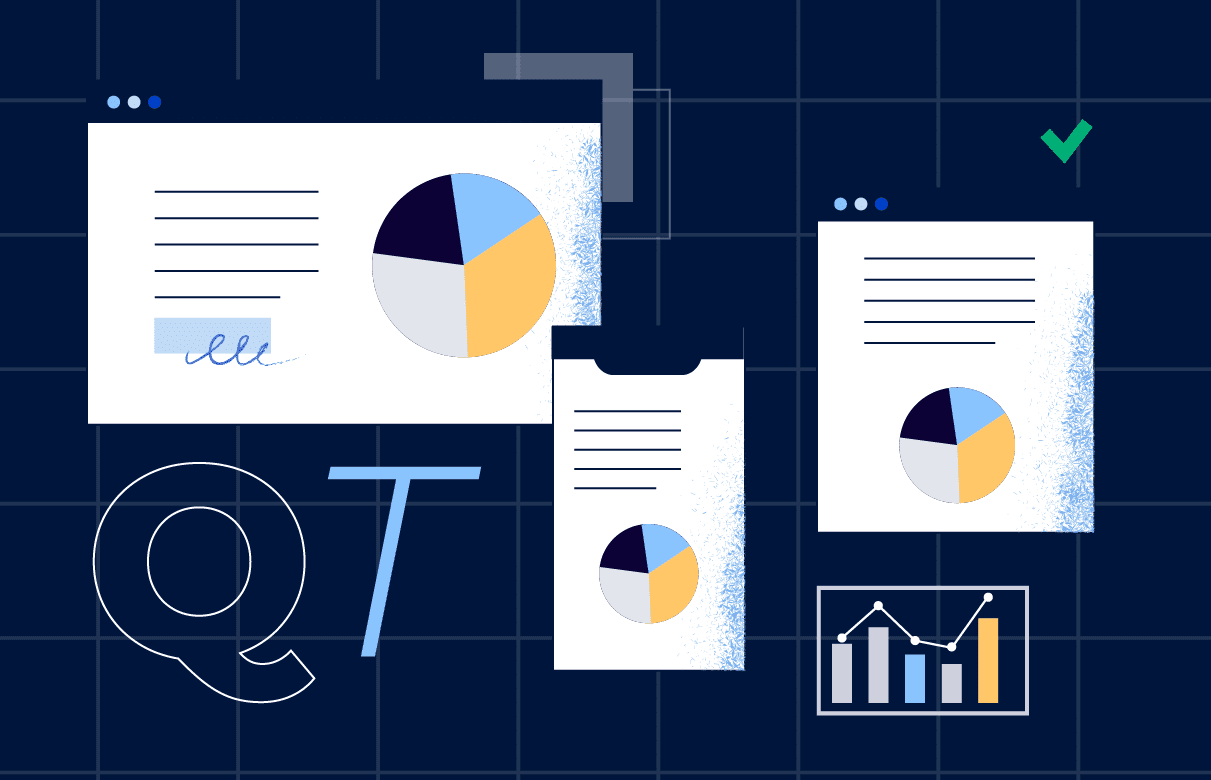The Internet of Things is already a mature technology. It has an impact on many business and social areas. However, specialists continue developing IoT systems and adding new capabilities, that’s why being aware of industry trends is not superfluous. This article covers the latest IoT trends as of 2025. Keep reading to explore the details.
With SaM Solutions’ wide range of IoT services, you get professional support and hands-on assistance at any stage of your IoT project.
Industry Overview
The market for connected devices is growing due to some reasons: businesses that require informed decision-making increasingly use predictive analytics; interconnected networks surge the demand for security solutions; appropriate management tools are needed to handle large volumes of produced IoT data.

- In 2024, there were about 18 billion active IoT-connected devices globally, according to Statista.
- This number is forecast to grow to more than 32 billion IoT devices by 2030, including those with WPAN, WLAN, cellular, LPWA, 5G, and other types of connectivity.
- Currently, there are over 400 active Internet of Things platforms, with the top 10 leading IoT platforms controlling about 65% of the market.
- The global IoT market is projected to reach $875 billion in 2025, showing a CAGR of 16.9%, as predicted by Market Data Forecast.
Internet of Things Technology Trends 2025
Now, let’s explore the current trends in IoT that will shape the industry’s development this year: industrial IoT, edge computing, IoT cybersecurity, 5G connectivity, environmental sustainability, low-power wide area networks, and smart factories.
1. Industrial IoT
Interconnected sensors, devices, and software solutions are used in the industrial environment (manufacturing, oil and gas, automotive, construction, agriculture, logistics, healthcare, and more) often enough. There emerged a separate branch of the Internet of Things — industrial IoT (IIoT).
When you introduce an IoT system into any production process, you can get a full spectrum of advantages:
- Eliminate errors, because machines are not subject to human errors.
- Provide asset traceability, which is great for transportation companies.
- Guarantee worker safety, as industrial robots work in hazardous conditions instead of humans.
- Deliver better quality by monitoring production in real time.
- Lower costs with task automation and minimized downtimes.
For example, in a manufacturing plant, sensors embedded in machinery can monitor performance, detect unusual vibrations, and alert about the need for maintenance before a breakdown occurs — preventing downtime that costs a fortune. According to Deloitte, Industrial IoT can reduce machine downtime by up to 30% and increase production output by 25%.
IIoT is a true game-changer for industries where monitoring, efficiency, and uptime are critical.
2. Edge computing
The Internet of Things relies on cloud computing, but cloud services have significant drawbacks, such as low bandwidth and potential high latency. This leads to challenges in real-time data processing. As a result, many companies are now investing in edge computing technology.
Globally, investment on edge computing reached $228 billion in 2024, according to the International Data Corporation (IDC), up 14% from 2023. With spending estimated to be close to $378 billion, expanding at a double-digit CAGR, the forecast shows a continuous significant increase through 2028.
What exactly is edge computing, and why is it currently one of the leading trends in IoT technology?
In traditional cloud computing, data from sensors and devices must travel to a central cloud server for processing before being sent back to the originating source. Typically, this involves covering considerable distances and can result in delays.
Edge computing, on the other hand, allows data collected by a device to be processed directly on that device, eliminating the need to send it to the cloud. This capability has become possible thanks to the enhanced computing power of modern devices.
Data collected on devices (on the edge) is not sent to a central server, but is processed on these same devices. This approach provides higher speed, significant bandwidth savings, and can ensure better privacy compliance.
Edge computing shares similarities with fog computing — another decentralized approach to data processing. The key difference is that in fog computing, data is shifted from sensors and devices to fog nodes and processors which are nearer to users than cloud servers, such as IoT gateways or LAN networks.
3. IoT cybersecurity
The increasing number of devices connected to the internet brings new vulnerabilities and exposures to both companies and private users. If one component in an IoT ecosystem is compromised, other devices are automatically at risk, since they are all connected.
Common IoT security issues include:
- data leaks and breaches
- malware, ransomware, DDoS attacks
- software weaknesses due to poor development practices
- outdated software
- device mismanagement
The growing threat of AI-powered cyberattacks emphasizes the need to secure devices, especially for remote and distributed teams. That’s why cybersecurity should be a top priority in the development and implementation of IoT solutions across all industries.
In recent years, the IoT security sector has grown exponentially. It is expected to rise from $8.7 billion in 2024 to $11.36 billion in 2025. (The Business Research Company)
Here are some tools that help businesses and users protect their Internet of Things solutions.
More enterprises are investing in software solutions that protect IoT devices from cyberattacks. An example is Quantum IoT Protect by Check Point, which identifies risks, assesses them, and prevents unauthorized access.
Digital businesses are adopting solutions that manage IoT credentials and mitigate threats related to weak or default passwords. This includes the periodic rotation of passwords and ensures compliance with security standards.
Companies are enhancing their network security using firewalls, identity and access management (IAM) products, remote access VPNs, and other tools.
An increasing number of countries are developing and enacting laws and standards to regulate the production and use of connected devices. IoT manufacturers and businesses will be required to comply with a range of security norms.
Business leaders are focusing more on developing in-house cybersecurity strategies.
4. 5G connectivity
The list of the current trends in the Internet of Things industry can’t be full without 5G. This technology marks the beginning of a new era of seamless and instant communication.
Due to the high speed and low latency of 5G, IoT devices can seamlessly interact in real time and transfer data much faster. IoT systems powered by 5G connectivity reach the level of responsiveness and efficiency previously unattainable: latency as low as 1ms and high data rates up to 20Gbps. What is more, 5G is able to support up to a million devices per square kilometer, contributing to the development of complex IoT ecosystems.
In 2024, IoT has been mostly driven by the automobile industry. Specialists calculated that 26% of the worldwide 5G IoT connections during the period came from transportation, supply chain, and logistics, with telematics, infotainment, and real-time navigation as key applications.
5. Environmental sustainability

Environmental problems are becoming more evident year by year, requiring innovative tech solutions to prevent or minimize negative effects. The Internet of Things offers lots of sustainability solutions.
- Smart buildings can reduce energy consumption by up to 35% by automatically adjusting lighting, heating, and cooling based on occupancy and weather conditions.
- In agriculture, IoT-powered precision farming helps minimize water usage by up to 50% and maximize crop yields through real-time soil and weather data.
- IoT in supply chain management is used to track shipments more efficiently, reducing unnecessary fuel consumption.
- Through a network of connected devices and sensors, smart cities gather real-time data on various aspects such as traffic flow, energy consumption, waste disposal, and air quality.
6. Low-power wide-area networks
Some industries or projects require connecting devices over long distances. This is where low-power wide-area networks, or LPWANs, make the difference. These networks are perfect for applications that don’t need to send a lot of data but need to run on very little power — think smart meters, environmental sensors, or GPS trackers.
Since LPWAN devices use so little energy, they can run for years on a single battery, which is a big deal for industries like logistics. For example, shipping companies are using LPWAN to track containers across the globe without worrying about constantly changing batteries.
The market for LPWANs is growing steadily: it is expected to hit a 15% annual growth rate through 2025. It’s clear this technology is making IoT solutions more practical and accessible for all kinds of businesses.
7. Smart factories
Smart factories are at the heart of Industry 4.0. They combine IoT, automation, and advanced analytics to completely transform how things are made. The process of creating a smart factory can be risky and challenging, as you have to invest in software systems, upgrade equipment, and train employees, among others.
With intelligent machines and sensors, however, factory owners get proven benefits that fully cover the costs. Look at some real-world examples.
The factory implemented automation solutions and digital twins into their processes. As a result, they managed to reach an impressive 99.99% production quality and increase productivity by 75%.
Due to the implementation of IoT sensors, AI solutions, and predictive maintenance in the supply chain and manufacturing processes, the company reduced production costs by 20%–30% and improved equipment uptime by 25%.
The combination of IoT, AI, and predictive analytics allowed this factory to reduce energy consumption by 10% and cut the overall manufacturing costs by 5%–10%. Informed decision-making facilitated 100% operational efficiency improvement.
How Can SaM Solutions Help You with IoT Development?
Embedded and IoT development is among the key services SaM Solutions offers to its clients. We assist companies from different industries in transforming their ideas into effective IoT solutions.
Our team of highly experienced developers is equipped to deliver a range of services tailored to your needs. Whether it’s end-to-end IoT implementation, IoT cloud development, consulting, audit and architecture assessment, troubleshooting IoT devices, integration, or other related services, we have you covered.
Takeaways
The Internet of Things trends compiled in this article highlight the expanding scope and diverse use cases of IoT across sectors. You’ve got an idea of how we will interact with and perceive IoT in the years to come. The future of the Internet of Things appears promising, with more companies adopting the above-mentioned trends.



















 The Latest 15 Information Technology Trends in 2024
The Latest 15 Information Technology Trends in 2024 Top 10 Embedded Software Development Tools
Top 10 Embedded Software Development Tools IaaS vs. PaaS vs. SaaS: What’s the Difference?
IaaS vs. PaaS vs. SaaS: What’s the Difference? 10 Examples of Predictive Analytics
10 Examples of Predictive Analytics












 Web App Development Cost in 2025 [Key Price Factors]
Web App Development Cost in 2025 [Key Price Factors] 13 Best React Development Tools in 2025
13 Best React Development Tools in 2025 Top 10 Mobile App Development Trends 2025
Top 10 Mobile App Development Trends 2025 Top IoT Industry Trends in 2025
Top IoT Industry Trends in 2025 Java Web App Security: Everything You Need to Know
Java Web App Security: Everything You Need to Know
If you keep an eye on the current IoT trends, you can generate more exciting ideas and then develop effective Internet of Things solutions for new application spheres.
IoT solutions add so much value to medical organizations and patients, improve treatment and save lives. All countries should invest more into the medical internet of things.
Cybersecurity issues go hand in hand with IoT, this is the fact. That’s why data protection tools are crucial for all businesses leveraging IoT solutions.
There are so many devices and objects connected to networks worldwide that we can hardly imagine how much information is available online. So we have the infinite area to create new IoT applications.
The Internet of Things is an ever-evolving industry, and it’s always interesting to learn new IoT trends. Thanks for keeping us up-to-date.
I agree that government regulations are necessary to protect loads of sensitive data produced and processed by IoT systems. Unfortunately, not all countries pay much attention to it yet.
This is my first time visit at here and i am in fact pleasant to read all at one place. Good article about IoT trends!
Great post. It has covered all the IoT trends with proper explanation. Thanks for this valuable piece of information.